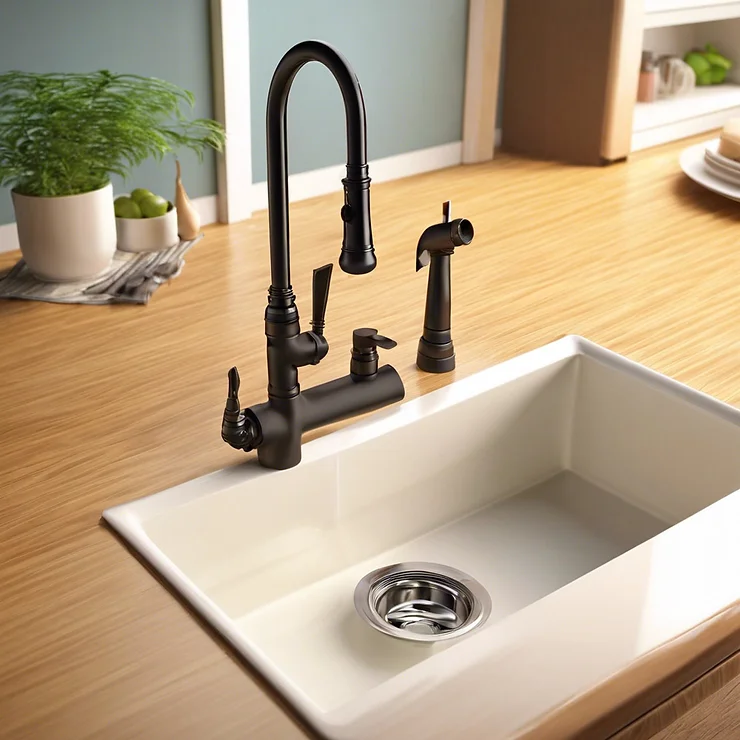A dripping faucet, a clogged sink, or the frustrating splash from a sink leaking can easily turn your kitchen into a battleground. These kitchen sink problems not only disrupt the rhythm of daily life but also signal underlying plumbing concerns that can escalate if left unchecked. So, what exactly does a kitchen sink problem mean? It’s more than just a nuisance; it’s a warning sign for bigger plumbing issues that, if ignored, can lead to costly repairs and water waste.
Imagine this: you’re preparing dinner, and suddenly, the water starts pooling around your feet, or the sink drain groans under a stubborn blockage. These aren’t just minor annoyances, they’re common issues that require swift action. Understanding the kitchen sink plumbing diagram can be incredibly helpful in diagnosing these problems, whether it’s a misaligned pipe, debris clogging the system, or a seal gone wrong.
But don’t worry, there’s good news. With the right sink problem solution, you can handle many of these issues without professional intervention. From using natural de-clogging agents to tightening pipes and replacing faulty washers, there are easy and effective remedies for every scenario. Not only do these solutions save money, but they also extend the life of your kitchen sink system, preserving its function and durability.
Common Kitchen Sink Problems
Contents
Plumbing issues in the kitchen sink come in several forms. Knowing the typical problems helps you recognize and address them quickly.
Leaking Sink
A sink leaking at the faucet, drain, or pipes beneath is a common issue. Leaks waste water, increase utility bills, and can lead to water damage in the cabinetry.
Clogged Sink
A clogged sink is another frequent problem, often caused by food debris, grease buildup, or foreign objects blocking the drain. It slows or stops water drainage and may emit a foul odor if left unchecked.
Low Water Pressure
Low water pressure in the kitchen sink can stem from sediment buildup in the faucet aerator, a blocked pipe, or an issue with the main water line.
You may need to know how to unclog a kitchen sink with standing water.
Foul Odors
Persistent foul odors from the kitchen sink are typically a result of food particles or grease trapped in the drain or garbage disposal. The stench can be unpleasant and challenging to eliminate.
Kitchen Sink Problem Meaning: Warning Signs
Understanding the kitchen sink problem meaning goes beyond just identifying an issue; it’s about recognizing the warning signs of more severe underlying problems. For example, a persistent leak may indicate worn-out washers, while foul smells could signal a blocked pipe. By observing and interpreting these signs, you’re better equipped to address minor issues before they become major headaches.
Diagnosing the Issue with a Kitchen Sink Plumbing Diagram
A kitchen sink plumbing diagram can be a handy tool for understanding your sink’s structure and pinpointing issues. This diagram usually shows the arrangement of pipes, joints, and connections, providing a roadmap to diagnose problems accurately. For instance, leaks often occur at joints, while clogs are more likely in bends and traps. With this visual aid, you can inspect specific areas and troubleshoot effectively.

Sink Problem Solutions for Every Scenario
Every kitchen sink problem has a unique solution. Here’s how to handle some of the most common issues with simple tools and minimal time.
How to Fix a Leaking Sink
For a sink leaking issue, start by checking all visible connections, including the faucet and pipes. Often, the cause is a loose or worn-out washer that can be tightened or replaced. For leaks under the sink, inspect pipe connections and replace any damaged seals to prevent further leakage.
Unclogging a Clogged Sink
To fix a clogged sink, use a plunger to push through the blockage. If that doesn’t work, try a baking soda and vinegar solution followed by hot water to dissolve greasy buildup. For stubborn clogs, a drain snake or auger may be necessary to reach deeper blockages.
Addressing Low Water Pressure
Low water pressure can often be solved by cleaning the faucet’s aerator. Unscrew it, remove any sediment, and rinse thoroughly. If the pressure issue persists, check for blockages in the supply line or consult a kitchen sink plumbing diagram to identify other possible sources.
Eliminating Foul Odors
For foul odors, thoroughly clean the garbage disposal and drain. Pour a mixture of baking soda and vinegar down the drain, followed by hot water. Alternatively, grind lemon peels or ice cubes in the disposal to freshen the smell and dislodge any trapped debris.
Preventative Measures to Avoid Future Problems
Preventive maintenance is essential to keep your kitchen sink in top condition. Avoid pouring grease down the drain, use a strainer to catch debris, and clean your disposal and drain regularly. Routine checks of the faucet, pipes, and connections can also help prevent leaks and clogging.
Conclusion:
Kitchen sink plumbing issues are common but manageable with the right knowledge and tools. By learning to recognize problems like leaks, clogs, and low water pressure, you can address them before they escalate. Implementing simple solutions and preventive measures keeps your kitchen running smoothly, making meal prep and cleanup a breeze. With these tips, you can avoid the stress of plumbing problems and maintain a functional, problem-free kitchen sink year-round.

